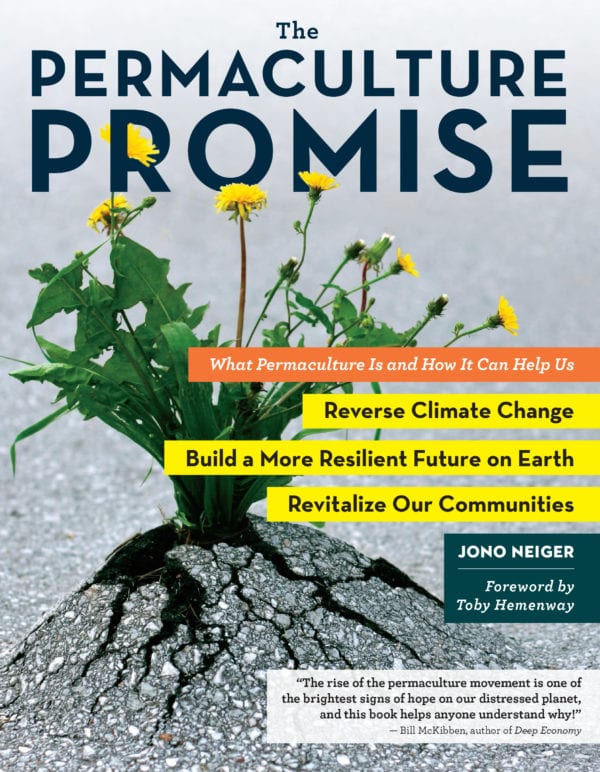 The Permaculture Promise: What Permaculture Is and How It Can Help Us
The Permaculture Promise: What Permaculture Is and How It Can Help Us
By Jono Neiger
Published by Storey Publishing, 2016
Anyone who has fallen short trying to explain permaculture and why it’s important can look for help in The Permaculture Promise. The book’s subtitle tells us exactly what author Jono Neiger hopes to convey: What Permaculture Is and How It Can Help Us. In this short volume, Neiger describes many permaculture practices and provides examples of successful permaculture projects from across the globe.
Originating in agricultural practices, the principles described by permaculture have expanded since the 1970s, when the term was coined, to include social elements required to develop complete, sustainable communities. In the first pages of the book, Neiger’s introduction briefly defines the overarching principles that guide permaculture in order to answer the question of what permaculture is: design that considers whole systems, a key to resilience, a positive and ethical approach to living, and a regenerative engine.
The greater part of the book spotlights 22 ways that permaculture practices are producing benefits at the individual level, the community level, and beyond to the global level. Each of 22 chapters presents one area in which permaculture can generate positive effects. Some sections harken to permaculture’s agricultural roots: Create Productive Landscapes, Turn Waste into Food, Stabilize Our Food Supply. Others consider broader societal sustainability in chapters titled “Spread the Wealth” and “Create Financially Resilient Communities.” Some chapters profile a particular project that demonstrates these effects.
For example, Chapter 17 describes how permaculture can “Ensure that We Have Enough Water,” a vital topic given the limited freshwater available globally and mounting pressure on a finite resource. This chapter highlights rainwater capture and reduction of consumption. It also profiles two projects. The first is an integrated water cycling system in New Hampshire. The system collects rainwater into a basement cistern for in-home and irrigation use and also incorporates a composting toilet and graywater system. The second profile is of a homestead in Conway, MA that has been developed as a permaculture learning center as the climate changes. The landscape has been designed to hold and move water on the 8-acre lot to the greatest benefit. Photos and illustrations, lists and examples add to the accessibility of the information in this chapter and throughout the book.
The Permaculture Promise presents small bites of permaculture. Although one might read the book cover to cover, one can just as easily flip to a chapter and dive into one of the 22 ways permaculture can give us hope as we confront big global problems. Permaculture offers insights into solutions, whether the problem is threats to a stable food supply, limits to freshwater availability during cycles of flood and drought, or a dwindling sense of community. It’s a hopeful view.
About the Reviewer
Maureen Sundberg has been the ELA Newsletter Editor since 2011, working out of her home in the Merrimack Valley of Massachusetts. She spends spare time in the summer developing wildlife habitat, incorporating native plants, and fighting invasive plants. Winters are for sewing and knitting.
***
Each author appearing herein retains original copyright. Right to reproduce or disseminate all material herein, including to Columbia University Library’s CAUSEWAY Project, is otherwise reserved by ELA. Please contact ELA for permission to reprint.
Mention of products is not intended to constitute endorsement. Opinions expressed in this newsletter article do not necessarily represent those of ELA’s directors, staff, or members.


